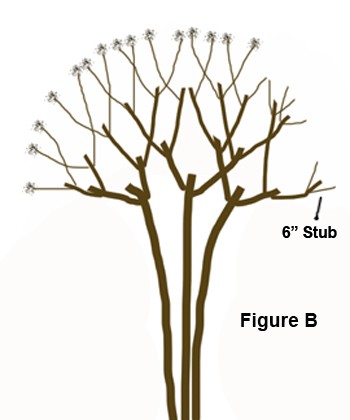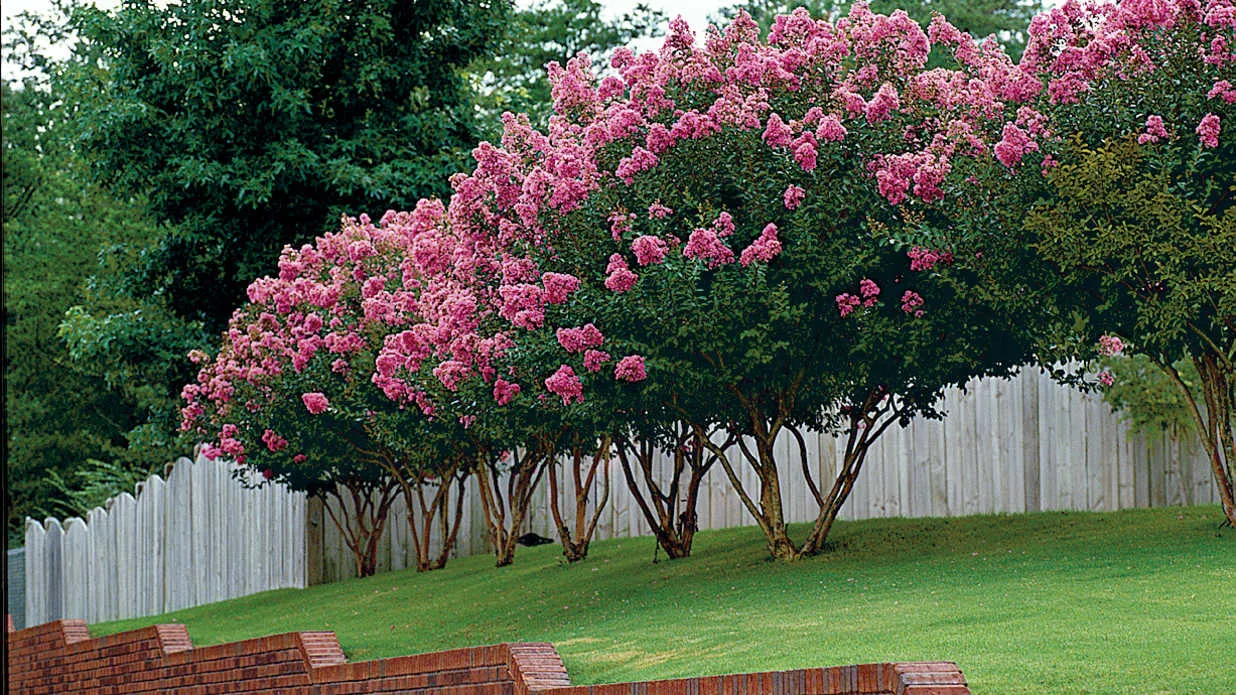In the Alachua County area, you will see a tree that is absolutely gorgeous when blooming throughout summer. It is planted quite regularly in Gainesville landscape designs and is quite the head-turner with all of it's bright colors. Unfortunately this tree, as every plant does, has it's strengths and weaknesses. One of the Crape Myrtle's weaknesses is that it is deciduous (loses it's leaves) and is rather boring in the winter months.
Due to it being a particularly boring tree in the colder months without leaves and color, many people that have them in their Gainesville lawn will prune them back every year. The important thing to remember is that it would be better to leave them alone than to prune them improperly. We've all seen over-pruning: where people chop back crape myrtles below the knuckles each and every year. Some in Gainesville even term it "Crape Murder."
When a crape myrtle is pruned back like this, it has 2 effects:
- Reduces the number of blooms that will be produced during summer.
- New branches will grow far too long and therefore not be able to support the weight of heavy blooms - particularly when wet. These long branches weep over and often break off during heavy rains.
When a crape myrtle is pruned properly:
- It will produce twice the number of branches and therefore twice the number blooms as it did during the previous year.
- The new branches will be strong enough to support blooms.

In the drawing to the right, you see a 4-year old crape myrtle tree as it may appear in late winter, when still in dormancy, and before new growth has begun to emerge. This tree has been properly pruned for 3 years. At the top of the branches you will notice seed pods that formed after last seasons blooms. In studying the diagram more closely you might notice where pruning cuts were made in previous years, and that wherever cuts were made two new branches emerged from beneath the cuts.
The arrow that says '6" stub' indicates where to make cuts when pruning your crape myrtle tree. The rule of thumb is to trace down from the top of a stem (from the seedpods if the tree bloomed), to where that stem meets a branch. Using a pair of sharp bypass or lopper pruners make a cut about 6 to 12 inches or so above the intersection - never below the intersection. Alternatively, you can grab the tip of stem and bend it over, making your cut right at the point where the stem starts to bend. Either way, the stub that is left should be strong enough to support the new branches that emerge just below your cut. Repeat this process until all stems have been cut as is shown on the right side of this diagram.
By using this method of pruning you will be promoting twice as many branches every season - which means a fuller canopy and twice as many blooms. To further "clean up" your crape myrtle tree, you can prune suckers that grew from the trunk base, and twiggy growth that emerged up and along the main trunk(s).
 There are, however, times that heavy pruning is helpful for the long-term growth of a crape myrtle. When a tree has been pruned at the same place every year incorrectly and has developed what are known as knuckles (see picture), sometimes it is neccessary to cut under the knuckle to allow completely new growth for that branch. After that, you should prune as described in this article.
There are, however, times that heavy pruning is helpful for the long-term growth of a crape myrtle. When a tree has been pruned at the same place every year incorrectly and has developed what are known as knuckles (see picture), sometimes it is neccessary to cut under the knuckle to allow completely new growth for that branch. After that, you should prune as described in this article.
People who have Crapes in their Gainesville lawn must not only make sure to prune the right way, but also at the right time too. Wrong-season pruning would mean cutting them in November and December. Don't let peer pressure by neighbors get to you. If you trim the crapes in the last two months of the year, and we get a warming trend in January or February as Alachua County so often does, the trees might actually start putting on new growth.
That new growth will be highly susceptible to freezing weather should it come on the heals of a warm spell. New growth will also tend to draw the cold right into the plant, causing needless damage to a tree that should be resting in dormancy. So, the best time to trim crapes in is late winter - just prior to new growth emerging.
If pruned the right way and right time, you'll enjoy one of the most beautiful trees in Gainesville landscaping, and for a long time too.


